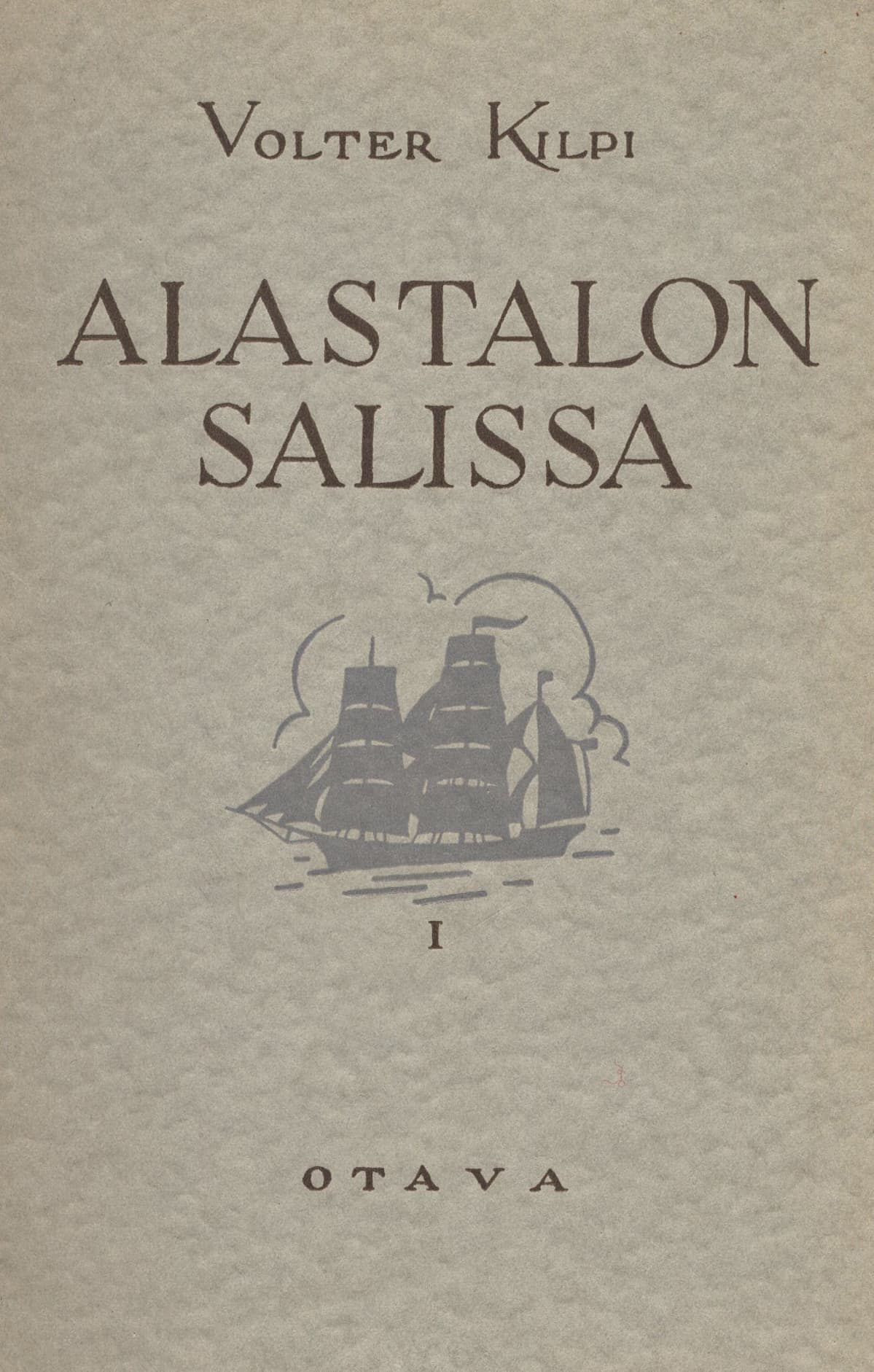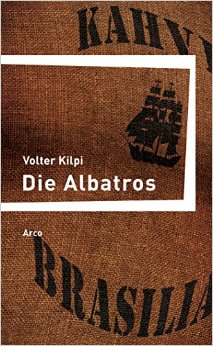When the great Finnish modernist genius Volter Kilpi died in the summer of 1939 at the age of 64, he left behind an unfinished novel manuscript about Lemuel Gulliver’s fifth voyage—this one supposedly to the North Pole, though along the way the ship is sucked into a vortex near the Pole and hurtled two centuries ahead in time. He and three surviving shipmates end up in London in 1938, wondering how to get back to their time.
In addition to translating what Kilpi wrote into Swiftian English, Douglas Robinson has here written the incomplete novel to the end, based on Kilpi’s report to his son on how he planned to return the men to 1738.
Because Kilpi also playfully pretended to have “found” the original English manuscript, presumably written by Lemuel Gulliver himself, and “translated” it into Finnish, Robinson goes along with that pretense and pretends to have rediscovered and “edited” and “annotated” the original English manuscript—written, perhaps, not by Gulliver but (at least partly) by Jonathan Swift.
The addition of Robinson’s English translation of Volter Kilpi’s “translator’s preface” and two fictional constructs—anonymous “random notes toward a vorticist manifesto” (1914) and an ersatz “reader’s report” by an imaginary Finnish Kilpi scholar named Julius Nyrkki—transforms the entire volume into a postmodern “critical edition” that would have tickled Volter Kilpi pink.
Book reviews:
Interviews:
Volter Kilpi’s classic novel Alastalon salissa (‘In Alastalo’s parlour’, 1933) has a reputation as a ‘difficult’ book. A Swedish translation is finally ready, but no one has ever succeeded in translating the work into English. Books from Finland decided to commission an extract – and had to admit defeat
‘Volter Kilpi is no good for people with weak lungs,’ said the poet Lauri Viita, some time toward the end of the 1940s. ‘Reading him, you get out of breath straight away.’ Kilpi’s major work, Alastalon salissa (‘In Alastalo’s parlour’) will take even an experienced reader two weeks, wrote another, older poet, Aaro Hellaakoski, in a 1937 essay.
Both were right. If one begins to read Volter Kilpi’s extended novel Alastalon salissa (1933) in the spirit of an entertainment or a detective novel, one soon tires. One can negotiate the slow tempo of its text, its long, curlicued sentences and wildly original vocabulary only by applying the brakes and pausing from time to time. For myself, I have found the twoweek reading period prescribed by Hellaakoski about right. Kilpi is a demanding writer: every word must be read, the path of each sentence followed to the end.
When the book appeared, contemporary reviewers were already mentioning the names of Marcel Proust and James Joyce. Kilpi had certainly read Proust, but Joyce exceeded his knowledge of English. Kilpi himself saw the connection with the modernists of his time, but also emphasised the differences; most important was the encouraging consciousness of the works of the French and Irish masters.
With the appearance of his great novel, Kilpi was immediately branded a difficult writer. He never became a favourite of the general public, but he soon attracted his own faithful readership, as well as posthumous revenge. His masterpiece has appeared in three editions. When, in 1992, Finland’s biggest newspaper, Helsingin Sanomat, asked a group of writers and critics – elite readers and literary gourmets – to name the best Finnish novels to have appeared since the country gained its independence in 1917, Kilpi’s Alastalon salissa made a surprise appearance at the top of the list.
Volter Kilpi (1874–1939) was by no means an unknown writer. He had al ready, at the turn of the century, published three novels, Bathseba, Parsifal and Antinous (1900–03). The names are indicative: the tone is aesthetic and meditative – the subtitle of the first novel is ‘David’s conversations with himself’. The young Kilpi was a sworn symbolist, or ‘romantic of the new century’, as Vilho Suomi, scholar of his early work, has characterised him. In his collection of essays Ihmisestä ja elämästä (‘Of man and life’, 1902), Kilpi stressed introspection, the importance of attending to one’s emotional experiences and perceptions, the role of art as a mirror of the inner life.
Kilpi’s early work was followed by a pause which was broken only by some interesting essays and personal criticism and a couple of works on contemporary political and cultural questions, Kansallista itsetutkistelua (‘National self-examination’) and Tulevaisuuden edessä (‘Facing the future’, 1917–18). After these, Kilpi withdrew into his private life and his work as principal librarian of the university in Turku.
The silence was broken only in 1933 by the novel Alastalon salissa, which was followed by a collection of short stories on the same subject, Pitäjän pienempiä (‘Lesser parishioners’, 1934) and a novel, Kirkolle (To church’, 1937). Kilpi gave the three books the collective name ‘the archipelago series’: they are all set around his home town of Kustavi, in the archipelago of south-western Finland. In the preliminary chapter of Alastalon salissa, which is at the same time the prologue to the entire archipelago series, the writer describes wandering through the churchyard of his native town, reading familiar names, ‘extinguished years and decades ago, whose lives are nevertheless before me like yesterday’. Like Proust, Kilpi is à la recherche du temps perdu.
Alastalon salissa was completed as its author approached his sixtieth birthday. Kilpi had been writing it for ten years. The initial subject, the building of a barque as a joint project among the inhabitants of an island parish, had been clear for some time, but the shaping of the correct narrative form and composition took time. Kilpi was not satisfied with conventional style; he wanted ‘plastic narrative instead of silhouette narrative’ and compared the result to solving an equation in many stages. Kilpi broke the bounds of conventional narrative and language in four directions: vocabulary, syntax, the handling of time and the depiction of characters. He took vocabulary from the dialect of his home area of Kustavi, but also invented his own neologisms and broke down the borders between parts of speech, nonchalantly changing nouns into adjectives, verbs or adverbs (and vice versa) almost in the manner of Finnegans Wake. Writing was, for him, a process, as irrational ‘as any other element of life’. Attempts have been made to explain Kilpi’s use of language with reference to his increasing deafness, which may have strengthened his predilection for detailed visual description.
The novel does indeed include extended descriptions of, for example, a pipe-shelf or tea-tray, but the auditory aspect is not neglected. Sentences of half a page or an entire page are not rare; in the case of a couple of them, it is known that he spent as much as a month constructing and polishing them. His narrative is slow throughout in terms of vocabulary, sentence structure and general composition. Thus time, in the novel, moves exceedingly slowly.
The novel describes a meeting in which freeholders and sea-captains (a common combination in island parishes) negotiate and decide to build a barque together. The meeting lasts for a total of around six hours, but the account of it occupies more than 900 pages. The imbalance between the story and the descriptive material is considerable and deliberate.
Kilpi offers detailed descriptions of the appearance of his characters, but most importance is what is happening inside. Inner monologue and summaries of thought processes are major factors in the novel’s structure. Kilpi uses them to sketch his central characters: the chairman of the meeting, the resourceful Alastalo; his thoughtful friend Härkäniemi; the big, rich Langholma and his opponent Pukkila, who is distinguished from the rest by his jumpy style of speaking and thinking.
The elongations of the temporal perspective and the emphasis on the characters’ inner lives develop the novel’s philosophy of the value of every individual and the importance of every moment. The framework of the novel and the elements, too, have their tasks. As Pirjo Lyytikäinen, who has studied Kilpi’s late work, remarks in her book Mielen meri, elämän pidot (‘Sea of mind, feasts of life’), the sea and seagoing are constantly present, both as symbols and in language, through metaphor. In the background is a broad artistic and philosophical perspective with constant references to Homer and Plato – there is a trace of the Symposium in the meeting in Alastalo’s house. The men are planning a profitable economic venture but seek, at the same time, a fantasy, their life’s dream.
Kilpi hoped his book would be translated into other languages. His works, or parts of them, have appeared only in Swedish, through the efforts of the Finland-Swedish writers Elmer Diktonius and Thomas Warburton. ‘Kilpi is not for everyone, not even for one person in two,’ Diktonius wrote, although he himself, as an experimental stylist, well appreciated Kilpi’s value. Every translation of Kilpi, then, is a voyage of discovery, an act of defiance, which demands of its translator both courage and creativity.
In his last, unfinished work, published in 1944, the aged Volter Kilpi set out on a completely new tack. Gulliverin matka Fantomimian mantereelle (‘Gulliver’s travels to the continent of Fantomimia’) is a sequel to Swift’s novel, but at the same time a sharp satire on the increasingly technical and coldly mechanical world of our times, in which people are, to one another, ‘only objects’. - Kai Laitinen
If you are the kind of person who would find fascinating a 70-page account of a character walking across the room to choose a pipe from the mantelpiece, then Volter Kilpi’s novel Alastalon Salissa (In Alastalo’s Parlour) is up your alley. The book was published in 1933 and forever changed the landscape of Finnish literature, as the modernist techniques employed by Kilpi allowed him to demonstrate to a stunning effect the creative potential of the Finnish language. The two volumes of Kilpi’s novel amounting to 900 pages of dense experimental writing narrate just six hours from the life of well-off dwellers of an island parish who have gathered in Alastalo’s parlour of the title to negotiate the building of a barque. The paucity of action is overcompensated by detailed overlong descriptions, the disjointed interior monologues of the characters, the use of dialect and linguistic innovations. The novel has been deservedly compared to Ulysses and In Search of Lost Time, although, as Kilpi’s knowledge of English was not sufficient to read Joyce’s masterpiece, it is more appropriate to talk about the artistic affinities between the two authors than about one’s direct influence on the other.
In case I have sparked your interest and you would like to learn more about Volter Kilpi and his monumental novel, without further ado, I’m redirecting you to Kai Latinen’s informative article (also from the defunct Books from Finland) with the dispiriting title On Not Translating Volter Kilpi. - theuntranslated.wordpress.com/author/theuntranslated/




No comments:
Post a Comment
Note: Only a member of this blog may post a comment.